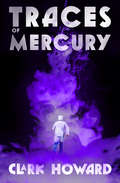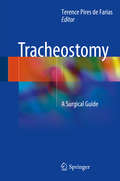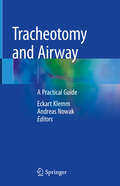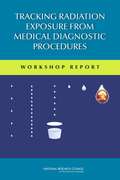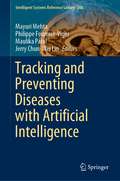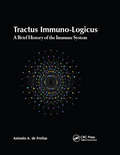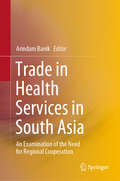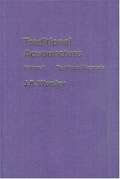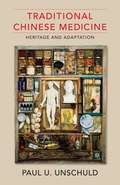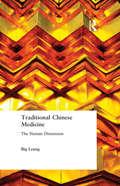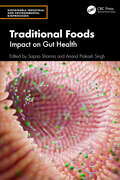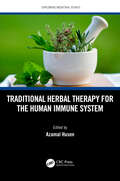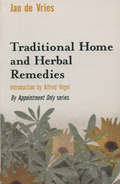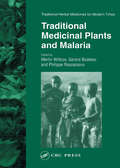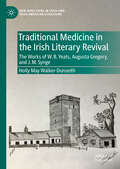- Table View
- List View
Traces of Mercury
by Clark HowardA small-town doctor copes with an escalating medical mystery in this thriller by a &“superlative storyteller&” (Publishers Weekly).Lee Madrigal became a doctor in spite of his difficult working-class upbringing, with a mother who died young and a father who fell under the spell of alcohol. Now Lee serves his neighbors in the California community where he grew up, and has reunited with his high school sweetheart. But the medical cases he&’s been handling lately have been bothering him: a baby born with inexplicable birth defects; a young man with symptoms that seem to mimic a venereal disease but whose blood tests come back clean. As the mystery mounts, Lee will discover a terrible secret about his hometown, and a battle to save lives will ensue . . .
Tracheostomy
by Terence Pires de FariasDespite often taken as a simple procedure, techniques on tracheostomy have evolved considerably on the last few years. Consequently, new technical variations and indications for different purposes are being developed and proposed. The current book is proposed to serve as a comprehensive guide exclusively devoted to tracheostomy, discussing its most important details, variations and indications. Here the reader will find a broad discussion ranging from the most basic pre-clinical aspects to post-surgical procedures and complications. Great emphasis is placed on key topics such as the oncologic patient, variations of the technique, and tracheostomy in the intensive care unit, among others. Additionally, some issues that are not commonly discussed in regular textbooks, like tracheostomy in child and in great obese, are also included. With a wealth of photos, illustrations and tables, Tracheostomy – A Surgical Guide provides the material necessary to support a safe and effective surgical intervention in different populations and surgical contexts, with the hope that it will result in improved care for patients who underwent tracheostomy.
Tracheotomy Management
by David Goldenberg Elizabeth H. Sinz Peggy A. SeidmanPatients with tracheotomies are managed by a wide variety of healthcare professionals. As a result, information regarding best practice is scattered throughout the medical literature and can be difficult to identify and implement in the clinical setting. Tracheotomy Management: A Multidisciplinary Approach is a practical review of all tracheotomy procedures and acute and chronic tracheotomy care. It combines evidence-based practice and expert opinion to create an invaluable hands-on guide for any healthcare provider managing patients with tracheotomies. Each chapter is authored by at least two different subspecialists, contains case studies with real-life examples of problematic clinical scenarios, and is enhanced by high quality colour images and algorithms. The rationale for different approaches is discussed to guide the decision-making process. Written and edited by tracheotomy experts from a wide variety of disciplines, Tracheotomy Management: A Multidisciplinary Approach is essential reading for anesthesiologists, nurse anesthetists and critical care and emergency physicians.
Tracheotomy and Airway: A Practical Guide
by Eckart Klemm Andreas NowakIn dem Kompendium wird die sachgerechte Durchführung aller Varianten der Tracheotomie beschrieben. Im Mittelpunkt der interdisziplinären Darstellung stehen insbesondere die Analyse schwerer Früh- und Spätkomplikationen, ihre Vermeidung und ihre Therapie. Auch die logopädische Behandlung sowie neue Aspekte des Airway-Managements werden berücksichtigt.
Track and Trace Management System for Dementia and Intellectual Disabilities (Advanced Technologies and Societal Change)
by Amit Kumar George Ghinea Suresh MeruguThis book reviews humanitarian literature and presents the development of low-cost track & trace management system integrated with accurate GPS location data pinging using Internet of Things (IoT). The first part relates to mobile device configuration with an embedded GPS and wireless Internet connection to transmit its current location. The second part presents web server implementation and development that receives the data, parses it, and stores it for access over the Internet. The third part discusses the user interface that allows one to visually identify the current location of the device.
Tracking Radiation Exposure from Medical Diagnostic Procedures
by National Research Council Division on Earth and Life Studies Nuclear and Radiation Studies Board Committee on Tracking Radiation Doses from Medical Diagnostic ProceduresThe growing use of medical diagnostic procedures is correlated with tremendous and undeniable benefits in the care of most patients. However, it is accompanied by growing concerns about the risks associated with diagnostic computed tomography and other procedures that utilize ionizing radiation. A number of initiatives in radiation safety in medicine have taken place in the United States and internationally, each serving different purposes. Their ultimate goals are to provide higher quality clinical management of the patient and to ensure that reasonable steps are taken to keep the exposures as low as possible without compromising diagnostic efficacy. Tracking Radiation Exposure from Medical Diagnostic Procedures: Workshop Reports provides a summary of the presentations and discussions that took place during the December 8-9, 2011, workshop titled "Tracking Radiation Exposure from Medical Diagnostic Procedures." This workshop was organized by the Nuclear and Radiation Studies Board of the National Academy of Sciences and sponsored by the Centers for Disease Control and Prevention, the U.S. Food and Drug Administration, and the U.S. Department of Health and Human Services. This workshop report was authored by a six-member committee of experts appointed by the National Academy of Sciences. This committee brought together public health regulators, physicians, manufacturers, researchers, and patients to explore "why," "what," and "how" to track exposure from medical diagnostic procedures and possible next steps.
Tracking and Preventing Diseases with Artificial Intelligence (Intelligent Systems Reference Library #206)
by Jerry Chun-Wei Lin Philippe Fournier-Viger Mayuri Mehta Maulika PatelThis book presents an overview of how machine learning and data mining techniques are used for tracking and preventing diseases. It covers several aspects such as stress level identification of a person from his/her speech, automatic diagnosis of disease from X-ray images, intelligent diagnosis of Glaucoma from clinical eye examination data, prediction of protein-coding genes from big genome data, disease detection through microscopic analysis of blood cells, information retrieval from electronic medical record using named entity recognition approaches, and prediction of drug-target interactions.The book is suitable for computer scientists having a bachelor degree in computer science. The book is an ideal resource as a reference book for teaching a graduate course on AI for Medicine or AI for Health care. Researchers working in the multidisciplinary areas use this book to discover the current developments. Besides its use in academia, this book provides enough details about the state-of-the-art algorithms addressing various biomedical domains, so that it could be used by industry practitioners who want to implement AI techniques to analyze the diseases. Medical institutions use this book as reference material and give tutorials to medical experts on how the advanced AI and ML techniques contribute to the diagnosis and prediction of the diseases.
Tractus Immuno-Logicus: A Brief History of the Immune System
by Antonio A. de FreitasThe history of this text started years ago after reading Wittgenstein'sTratactus Logico-Philosophicus. At some time later, it seemed to me a good idea to follow thetratactus structure to attempt to write a minimal description of the immune system. I finally did it for fun and hopefully to be useful to whomever reads it.The text reflects my ow
Trade Agreements and Public Health: A Primer for Health Policy Makers, Researchers and Advocates (Palgrave Studies in Public Health Policy Research)
by Ronald Labonté Deborah GleesonThe need for policy coherence between trade and health has never been greater, yet few public health workers are equipped to navigate this complex field. This book aims to fill this gap, providing a focused and readable introduction to the topic. It introduces the principles underpinning trade treaties and examines the implications of trade rules for health services and access to medicines, unhealthy commodities, labour rights and the environment. It explores the trade policy making process, methods for trade and health research, and recommendations for strengthening policy coherence.
Trade Therapy: Deepening Cooperation to Strengthen Pandemic Defenses
by World Bank;World Trade OrganizationThe COVID-19 (coronavirus) pandemic has exposed the upsides and downsides of international trade in medical goods and services. Open trade can increase access to medical services and goods—and the critical inputs needed to manufacture them—improve quality and variety, and reduce costs. However, excessive concentration of production, restrictive trade policies, supply chain disruptions, and regulatory divergence can jeopardize the ability of public health systems to respond to pandemics and other health crises. Trade Therapy: Deepening Cooperation to Strengthen Pandemic Defenses, coordinated by Nadia Rocha and Michele Ruta at the World Bank and Marc Bacchetta and Joscelyn Magdeleine at the World Trade Organization, provides new data on trade in medical goods and services and medical value chains, surveys the evolving policy landscape before and during the pandemic, and proposes an action plan to improve trade policies and deepen international cooperation to deal with future pandemics. As the COVID-19 pandemic lingers, the focus of policy action is on the response, which includes actions aimed at removing bottlenecks and providing government support to promote equitable access to vaccines. As the emergency subsides, the focus should shift to prevention and preparedness. Steps to close information gaps—building on the Multilateral Leaders Task Force on COVID-19, the ACT-Accelerator, and the open markets, for example—by negotiating tariff reductions on medical goods and greater market access in services should take priority. Also important are measures to improve the efficiency of markets, which include harmonizing regulation through mutual recognition or equivalence of standards and creating international standards for essential medical goods, inputs, and production processes. Agreement on a crisis rulebook to be deployed during an emergency—including clear and agreed limits on export policy flexibility and shared rules on intellectual property flexibilities—would provide a more solid policy foundation to address future challenges.
Trade Union Strategies against Healthcare Marketization: Opportunity Structures And Local-level Determinants (Routledge Key Themes in Health and Society)
by Jennie AuffenbergMarketization in the healthcare sector affects the quality and delivery of care, as well as healthcare workers’ working conditions. Based on a comparison of England and Germany, along with an in-depth case study looking at New York, USA, this volume examines how trade unions respond to marketization processes and the determinants of successful strategies. The author draws on a rich empirical study to develop a theoretical framework that accounts for sector-specific opportunity structures stemming from marketization processes and on the relevant unions’ local-level leeway that opens if they build up and mobilise the available resources and capacities. The book identifies determinants of successful trade union strategies, explains the puzzling observation of similar strategic choices across different systems, and draws conclusions for prospects of trade unionism in the marketized healthcare sector. This book emphasizes the transformative effect of marketization on healthcare and the opportunities this change creates for unions, while giving special attention to the local-level conditions of trade unionism in the analysis of conflicts evolving around marketization in the hospital sector. It is of interest to academics and practitioners working in healthcare management, human resource management, and employment relations.
Trade in Health Services in South Asia: An Examination of the Need for Regional Cooperation
by Arindam BanikThis book observes that an in-depth study exclusively focusing on health service trade not only strengthens the overall services trade capacity of the South Asian region, but also promotes global as well as regional trade. There is a dearth of analytical research on estimating barriers to trade in health services, particularly in the context of South Asia, and as such, this book assesses the potential benefits and economic costs of barriers to trade in health services in select South Asian economies. It also analyzes the impact of liberalization and regulatory reforms on economic welfare. It broadly addresses issues relating to trade in health services, the GATS (General Agreement on Trade in Services), such as: Why are the current levels of trade in health services low? How will the GATS legally affect a country’s health policy? What effect might liberalization have on national health systems? And what are the likely benefits of greater trade in health services? It also provides specific answers to the following questions: Does the substantial role of the government in health – as health service provider, financial supporter, regulator and promoter – have implications for the treatment of the sector under the GATS? What is the impact of liberalization of international trade in health services on the quality and availability of health services in developing SAARC countries? Given the importance of consumption abroad for trade in health services, and the gradual opening of health markets through Modes 1 and 3 (cross-border supply and commercial presence), how can problems associated with trade in these Modes be prevented? And are these problems sufficiently addressed by GATS disciplines? Answers to these questions will be of great use to researchers, policy makers as well as practitioners and NGOs of South Asia.
Traditional Acupuncture: Traditional Diagnosis
by J. R. WorsleyThe Art of Diagnosis, The Skills of Diagnosis, The Consultation, The Physical Examination, Special Considerations.
Traditional Chinese Medicine
by Brent A. Bauer Eric J. Bieber Chun-Su YuanThe authors of the Textbook of Complementary and Alternative Medicine present practitioners, physicians, and allied health workers with detailed material for a wide ranging understanding of what Traditional Chinese Medicine can offer.
Traditional Chinese Medicine and Diseases: An Omics Big-data Mining Perspective (Translational Bioinformatics #18)
by Kang NingThis book focuses on the multi-omics big-data integration, the data-mining techniques and the cutting-edge omics researches in principles and applications for a deep understanding of Traditional Chinese Medicine (TCM) and diseases from the following aspects: (1) Basics about multi-omics data and analytical methods for TCM and diseases. (2) The needs of omics studies in TCM researches, and the basic background of omics research in TCM and disease. (3) Better understanding of the multi-omics big-data integration techniques. (4) Better understanding of the multi-omics big-data mining techniques, as well as with different applications, for most insights from these omics data for TCM and disease researches. (5) TCM preparation quality control for checking both prescribed and unexpected ingredients including biological and chemical ingredients. (6) TCM preparation source tracking. (7) TCM preparation network pharmacology analysis. (8) TCM analysis data resources, web services, and visualizations. (9) TCM geoherbalism examination and authentic TCM identification. Traditional Chinese Medicine has been in existence for several thousands of years, and only in recent tens of years have we realized that the researches on TCM could be profoundly boosted by the omics technologies. Devised as a book on TCM and disease researches in the omics age, this book has put the focus on data integration and data mining methods for multi-omics researches, which will be explained in detail and with supportive examples the “What”, “Why” and “How” of omics on TCM related researches. It is an attempt to bridge the gap between TCM related multi-omics big data, and the data-mining techniques, for best practice of contemporary bioinformatics and in-depth insights on the TCM related questions.
Traditional Chinese Medicine: A Natural Guide to Weight Loss That Lasts
by Nan Lu Ellen SchaplowskyThe Dragon's WayTo Natural, Healthy, Lasting Weight LossHere at last is the secret to taking off pounds and inches and keeping them off for life. Unlike popular "miracle" diet programs and products, The Dragon's Way addresses the root cause of your weight problems and offers a remarkable six-week program that shows you how to reach your optimum weight and stay there. The Dragon's Way is based on Traditional Chinese Medicine (TCM) theories that have been practiced for thousands of years. Today billions of people worldwide benefit from this medical system. The Dragon's Way is not about food restrictions, apetite suppression, or vigorous exercising. It's about treating the whole person instead of focusing on weight; about how to use ancient energy movements to awaken your healing ability; about showing you how to use food as a healing tool; and about helping you achieve the harmony and balance in your own body that can result in natural, healthy, permanent weight loss.Discover:How the Traditional Chinese Medicine approach differs from diet programsHow this TCM program makes you feel better physically and emotionallyHow stress causes weight problemsHow food cravings signal body needsWhy depriving your body of food leads to further weight gainHealing foods and recipes that help you eliminate excess water and body fatHerbal supplements and energy movements that encourage body harmony and help you avoid excess wieghtAdditional health benefits beyond wieght lossAnd Much More!
Traditional Chinese Medicine: Heritage and Adaptation
by Paul U. UnschuldA leading authority explains the ideas and practice of Chinese medicine from its beginnings in antiquity to today. Paul U. Unschuld describes medicine's close connection with culture and politics throughout Chinese history. He brings together texts, techniques, and worldviews to understand changing Chinese attitudes toward healing and the significance of traditional Chinese medicine in both China and the Western world.Unschuld reveals the emergence of a Chinese medical tradition built around a new understanding of the human being, considering beliefs in the influence of cosmology, numerology, and the supernatural on the health of the living. He describes the variety of therapeutic approaches in Chinese culture, the history of pharmacology and techniques such as acupuncture, and the global exchange of medical knowledge. Insights are offered into the twentieth-century decline of traditional medicine, as military defeats caused reformers and revolutionaries to import medical knowledge as part of the construction of a new China. Unschuld also recounts the reception of traditional Chinese medicine in the West since the 1970s, where it is often considered an alternative to Western medicine at the same time as China seeks to incorporate elements of its medical traditions into a scientific framework. This concise and compelling introduction to medical thought and history suggests that Chinese medicine is also a guide to Chinese civilization.
Traditional Chinese Medicine: The Human Dimension
by Big LeungTraditional Chinese Medicine (TCM) is a great treasure of China's ancient history and culture. Written for health professionals, researchers, social scientists and educators, this book elaborates a view that TCM is embodied in diverse and complex human dimensions and meanings in Chinese culture. Encircling Cultural Meaning includes the TCM concept 'Qi', the holistic approach, which embodies culture in medicine. The book identifies intricate human dimensions of TCM in: the life stages of youth, adulthood and old age, as family connections, as identity, as balancing /harmonising life, as complementary and knowledge transmission roles. In particular, TCM is seen through the lens of leadership - as refining human relationships, as self, as moral practice, as good management practice, and as embracing the cultural environment. Underlying these categories, shared meanings are revealed, as well as core values and health beliefs in Chinese culture. The complex human dimensions of TCM are shown to be deeply rooted in social, cultural and historical contexts in the Chinese diaspora. The Spirit of Chinese Culture: its Human Centredness Conceptions of Leadership in Traditional Chinese Medicine TCM for Youth, Adults and the Elderly TCM in Family Connectedness Chinese Identity, Body Image and Gender Balance/Harmony/Knowledge Underlying Beliefs and Roles Social-Cultural Significance The author draws from and extends her PhD research on lived Chinese experiences and conceptions of TCM across diverse individuals, populations, two focus groups in Australia, and three focus groups in Macau and Hong Kong. Encircling Cultural Meaning reveals rich and profound values in Chinese culture manifested at all levels of life, including: the reciprocal care of filial piety, trust, respect, considerations for others, the quest for self understanding, and the strive for peace and harmony. These inner virtues in human relationships offers a soothing refuge and solution to the modern world which is often punctuated with imbalance, the overdependence on material acquisition, distrust, violence, and man's inhumanity towards man.
Traditional Foods: Impact on Gut Health (Sustainable Industrial and Environmental Bioprocesses)
by Sapna Sharma and Anand Prakash SinghTraditional Foods: Impact on Gut Health delves into the profound influence of traditional foods and dietary interventions on gut health, immune modulation, and disease prevention. This comprehensive book unites ancient culinary wisdom with contemporary scientific advancements, presenting a detailed exploration of traditional food practices, their phytochemical properties, and their profound impact on digestive and overall health.Drawing from a multidisciplinary perspective, the chapters traverse diverse topics such as the historical and nutritional value of traditional foods, the gut health benefits of millets, phytochemicals and their chemistry, the dynamic interplay of fermented foods and microbiomes, and strategies for food allergy management. Special emphasis is placed on critical health concerns, including gut-associated cancers, liver disorders, leaky gut syndrome, and the emerging roles of biopolymers in cancer treatment.By integrating state-of-the-art research with historical practices, this volume serves as an invaluable resource for researchers, health professionals, and anyone intrigued by the science of food and health. Real-world case studies, illustrative examples, and cutting-edge insights offer a bridge between cultural heritage and modern medicine, showcasing the transformative power of food as medicine.
Traditional Herbal Therapy for the Human Immune System (Exploring Medicinal Plants)
by Azamal HusenDrawing on indigenous and scientific knowledge of medicinal plants, Traditional Herbal Therapy for the Human Immune System presents the protective and therapeutic potential of plant-based drinks, supplements, nutraceuticals, synergy food, superfoods, and other products. Medicinal plants and their products can affect the immune system and act as immunomodulators. Medicinal plants are popularly used in folk medicine to accelerate the human immune defence and improve body reactions against infectious or exogenous injuries, as well as to suppress the abnormal immune response occurring in immune disorders. This book explains how medicinal plants can act as a source of vitamins and improve body functions such as enhanced oxygen circulation, maintained blood pressure and improved mood. It also outlines how specific properties of certain plants can help boost the immune system of humans with cancer, HIV, and COVID-19. Key features: Provides specific information on how to accelerate and or fortify the human immune system by using medicinal plants. Presents scientific understanding of herbs, shrubs, climbers and trees and their potential uses in conventional and herbal medicine systems. Discusses the specific role of herbal plants that act as antiviral and antibacterial agents and offer boosted immunity for cancer, H1N1 virus, relieving swine flu, HIV and COVID-19 patients. Part of the Exploring Medicinal Plants series, this book is useful for researchers and students, as well as policy makers and people working in industry, who have an interest in plant-derived medications.
Traditional Home and Herbal Remedies
by Jan de VriesToday, more and more people are beginning to rediscover the healing powers of roots and plants. Indeed, some of the most frequently prescribed and powerful drugs are based on plant extracts.Jan de Vries has researched as far back as the twelfth century and has recorded the folk wisdom of various countries, learning from them the popular remedies passed on by their forebears.In Traditional Home and Herbal Remedies, he shares some of these secrets with his readers. Everyone who agrees with his philosophy that nature has a way to help every illness will find this book an invaluable source of information and encouragement.
Traditional Medicinal Plants and Malaria (Traditional Herbal Medicines for Modern Times #4)
by Merlin Willcox; Gerard Bodeker; Philippe RasoanaivoMalaria is an increasing worldwide threat, with more than three hundred million infections and one million deaths every year. The worlds poorest are the worst affected, and many treat themselves with traditional herbal medicines. These are often more available and affordable, and sometimes are perceived as more effective than conventional antimala
Traditional Medicine in the Irish Literary Revival: The Works of W.B. Yeats, Augusta Gregory, and J. M. Synge (New Directions in Irish and Irish American Literature)
by Holly May Walker-DunseithThis book explores representations of traditional medicine and healing practices in Irish Revival-era literature spanning from the late nineteenth century to the early twentieth century. Specifically, the book focuses on the work of William Butler Yeats, Lady Augusta Gregory, and John Millington Synge. The author examines folk medical practices and analyses how folk medicine appears in literature, bringing to light fresh contexts and materials including diaries, letters, folklore collections, and medical texts. By writing the first book to explore the place of traditional medicine in Irish literature, Walker-Dunseith sheds light on a distinctive area of Irish life and practice that gestures towards the possibility of a culture and nation in the act of healing itself and questioning nationalistic discourses.
Traditional Medicines for Modern Times: Antidiabetic Plants (Traditional Herbal Medicines for Modern Times)
by Amala SoumyanathThe increasing prevalence of diabetes mellitus world-wide is an issue of major socio-economic concern. Scientific interest in plant-derived medicine is steadily rising, yet there is often a wide disparity in the caliber of information available. A detailed compilation of scientific information from across the globe, Traditional Medicines for Modern
Traditional Midwives: Cross-Cultural Perspectives (Social Science Perspectives on Childbirth and Reproduction)
by Betty-Anne Daviss Robbie Davis-Floyd Inayat AliTraditional Midwives: Cross-Cultural Perspectives is a pioneering work that delves deeply into the worlds of traditional midwives, shedding light on their practices, roles, and the immense cultural value they hold within their respective communities wherever they are still allowed to practice. This book not only champions the significance of traditional midwifery but also critiques the (often misguided) global and national initiatives that seek to move all childbirths into biomedical facilities. These facilities, as clearly shown by the chapters in this book, are frequently underequipped and under-staffed, often providing substandard care that can often be obstetrically violent and abusive. The push to move all births into such facilities disregards the quality of care that traditional midwives provide and undermines the trust and rapport they have built within their respective communities. This global push is particularly detrimental to rural women because biomedical facilities are often located far away from such communities. This geographical distance makes access to maternity care difficult, if not impossible, especially for rural women. Furthermore, almost none of the biomedical practitioners are willing to live and practice in such remote areas, thereby leaving thousands of (especially rural) women without any maternity care provision.Other critical points that this book addresses are the failures of the governmental efforts to train traditional midwives in higher-level skills. As the chapters in this book also clearly demonstrate, the essence of traditional midwifery lies in experiential learning, where skills are passed down through observation, practice, and mentoring.By bringing to light the multiple challenges that are currently being faced by traditional midwives and the shortcomings of biomedical facilities, this book serves as a crucial reminder of the need for culturally safe and sensitive community- based maternity care that traditional midwives are fully able to provide. It is an essential read for policymakers, healthcare professionals, students, and for anyone who is interested in traditional midwives and their practices.
